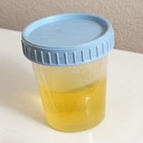The Antitrust Division must step forward and take a leading role in the development of the Government’s multi-faceted response to the current market conditions. Vigorous antitrust enforcement action under Section 2 of the Sherman Act will be part of the Division’s critical contribution to this response. ~Christine A. Varney
It looks like the U.S. Department of Justice (DOJ) has repealed a policy seen as being lax on antitrust violations thus opening the possibility of a more aggressive approach toward antitrust enforcement under the Obama administration.
The DOJ’s Antitrust Division has withdrawn a September report that “raised too many hurdles to government antitrust enforcement and favored extreme caution” toward antitrust enforcement action, the DOJ said. The change in policy could mean that the department looks harder at the actions of technology vendors such as Google, Oracle and IBM, as detractors have raised antitrust concerns about all three in recent months.
An Executive Summary of the Department’s report is attached. The full report can be found on the Department of Justice’s web site.

In the speech, Vigorous Antitrust Enforcement in this Challenging Era (available here), Varney declared:
In withdrawing the Section 2 Report, I made specific reference to the Report’s conclusions. In particular, Chapter 3 of the Section 2 Report concluded that where conduct-specific tests are not applicable, “the disproportionality test is likely to be the most appropriate test[.]”(7) With this baseline, conduct is only considered anticompetitive where it results in harm to competition that is disproportionate to consumer benefits and to the economic benefits to the defendant. In other words, the anticompetitive harm must substantially outweigh procompetitive benefits to be actionable. The Report’s adoption of the disproportionality test reflected an excessive concern with the risks of over-deterrence and a resulting preference for an overly lenient approach to enforcement. The failing of this approach is that it effectively straightjacketed antitrust enforcers and courts from redressing monopolistic abuses, thereby allowing all but the most bold and predatory conduct to go unpunished and undeterred.
This may mean trouble for not just the tech giants — Microsoft, Intel, Google — but could also signal a shift in the direction for pharmaceutical “reverse payments” — settlements in the pharmaceutical industry that embody payments made by the patent-holder/brand manufacturer to the alleged patent infringer/generic manufacturer.
The FTC and Justice in the Bush Administration had been split on reverse payments. In general, the brand-name and generic manufacturers agree to a future date at which the generic would enter the market. The allegation is that the brand manufacturer protects its monopoly position by paying off potential competitors to delay entering the market.
Earlier, the U.S. Court of Appeals for the Federal Circuit gave a high-five to settlement agreements between a patent holder and a generic manufacturer saying it doesn’t violate antitrust laws under the Hatch-Waxman Act. In re Ciprofloxacin Hydrochloride Antitrust Litigation (08-1097).
Now at the Supreme Court is a case being heard on certiorari, Arkansas Carpenters Health and Welfare Fund, A.F. of L., et al. v. Bayer AG and Bayer Corp., et al., No. 08-1194; cert. petition filed on Mar. 23, 2009, 2009 WL 797579.
QUESTION PRESENTED
Whether an agreement by a patent owner to pay a potential competitor not to enter the market is illegal per se, as the Sixth Circuit has held, is legal per se, as the Second and Federal Circuits have held, or should be judged under the antitrust rule of reason, as the Eleventh Circuit has held.
The Court of Appeals for the Federal Circuit held that in cases such as this, where all anti-competitive effects of the settlement agreement are within the exclusionary power of the patent, the outcome is the same whether the court begins its analysis under antitrust law by applying a rule of reason approach to evaluate the anti-competitive effects, or under patent law by analyzing the right to exclude afforded by the patent. The essence of the inquiry is whether the agreements restrict competition beyond the exclusionary zone of the patent.
It’s possible that Varney’s pronouncement could mostly just signal a shift in antitrust enforcement back to standards that are reasonable. What’s troubling is anytime the government decides to make sweeping policy changes based on current economic indicators instead of solid policy theory. Ms. Varney’s remarks signaled that the decision could be driven quite a bit by voter anxiety:
The question on every American’s mind is: “What can the Government do to help ease consumers’ burden in these troubled economic times?” This question is particularly pressing for the Antitrust Division, which in the past has come forward to play a significant role in response to economic crises. It is time for the Antitrust Division to step forward again. I believe this country’s prior experience in responding to economic crises must be considered in evaluating our response to current market conditions. As Shakespeare once put it – “what’s past is prologue.” In particular, I have considered the Government’s response to the market conditions that followed the Great Depression, and I believe there are important lessons we can learn from that era.
Maybe, the government should stop trying to ease everyone’s burden.



